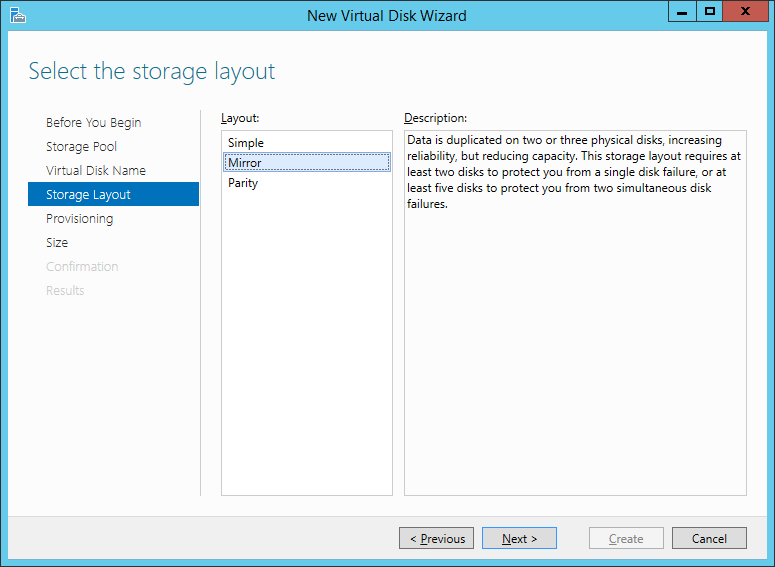

#ADD MORE DISK SPACE TO HYPER V SOFTWARE#
Within the UEB VM itself, the underlying software recognizes the additional disk, but it is still unused, so I need to expand my backups storage to incorporate it. In this example, I am attaching a previously created VHDX called “new-disk-2” then click on “Apply” to attach it to my UEB VM. If I do not, I can click on “New” and go through the Virtual Hard Disk Wizard and create my new disk. If I already have a virtual disk, I can browse to it and attach it to my VM. I can then select “Add” for a Hard drive and follow the menus to add my disk. To add space, I go to Settings and then select “SCSI Controller”. After deployment, I have 80GB for my backups device, but I later find that it is not enough for my data protection needs, and I would like to add more.
#ADD MORE DISK SPACE TO HYPER V FREE#
Let’s walk through an example with a Unitrends Free Backup for Hyper-V VM. But for adding a disk, the really nice thing is that you do not have to reboot your VM if it can recognize the disk at run-time! Note that some hardware changes will be grayed-out, requiring that the VM be shut down first. Clicking on it will open a pop-up which shows your VM’s current settings, and for certain types of hardware, will allow you to configure it while the VM is running. Just select your VM from the Hyper-V Manager’s list of VMs and you will see, in a panel on the right-hand-side, an item called “Settings…”. But what can you do if you find that you need additional disk space for your VM after you have used it for a while? The Hyper-V Manager has just the tools to help, by allowing you to create and attach a new virtual disk to your running VM. In one of my earlier blog posts, entitled “ Onward to VHDX“, I talked about using virtual disks and the conversion of disks to the new VHDX format in Hyper-V 2012. Both of these are better satisfied with fixed disk types.One of the nice features about Hyper-V virtualized environments is the flexibility with which you can manage disk space. Performance and storage space manageability are critical elements in thinking about production virtual machine resources. For many in production environments, fixed size disks may still be the preferred type in provisioning production VM disks. We name the Hyper-V VHD (virtual hard disk) and choose the location.įinally, we finish out the configuration and provisioning of the new virtual hard disk.Ĭreating a fixed size disk for Hyper-V VM has many benefits in thinking about performance, disk fragmentation, and storage manageability. Since we want to create a fixed size or thick provisioned disk, we select that option below. Here we can choose Fixed size, Dynamically expanding, or differencing. This will begin the New Virtual Hard Disk Wizard. In the properties of your Hyper-V VM, choose SCSI Controller and then select Hard Drive and click the Add button. By choosing to add a hard disk later, we have the option to choose to add a fixed size disk.

When we run the New Virtual Machine Wizard and choose the third option, we are telling the New Virtual Machine Wizard not to create a hard disk for the VM – we intend to do it later.Īfter we finish out the wizard to create the Hyper-V VM, we can go back into the properties of the VM and add a hard disk. Let’s look at the process to create a fixed disk on a Hyper-V virtual machine that we have created. Creating a fixed size hard disk for Hyper-V VM

Free space can disappear and take all VMs offline. If the dynamic disks begin to expand due to storage space requested, available free space on a SAN or other storage medium can quickly diminish. This means you can allocate more disk space to VMs than you have available. This is especially true since when creating dynamic disks, storage can be overprovisioned. Many may initially use dynamic disks to save space, however, since dynamic disks expand on the fly, they are prone to fragmentation which can impact performance.Īnother important factor in considering the disk type, when thinking about managing available free space on a SAN or other storage medium, dynamic disks pose the danger of filling up available storage and take VMs offline. Even with VHDX formats, there are reasons that many are still leaning towards using fixed size disks in production environments.Įven with VHDX files, there is still an IOPs hit when dynamic disks expand. However, with VHDX formats now, the differences between the two are less pronounced. For VHD formats, fixed size disks are definitely recommended for production use.


 0 kommentar(er)
0 kommentar(er)
